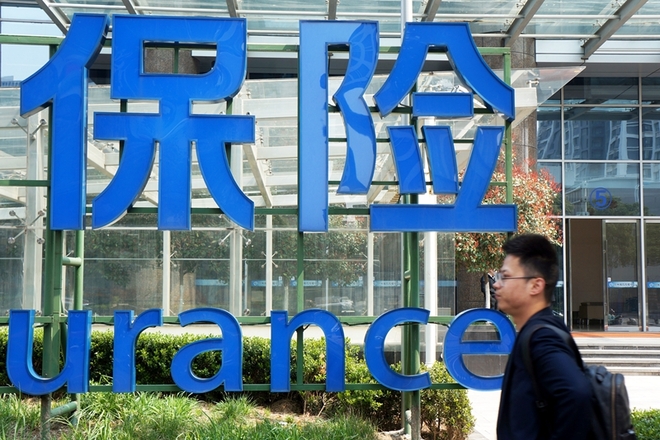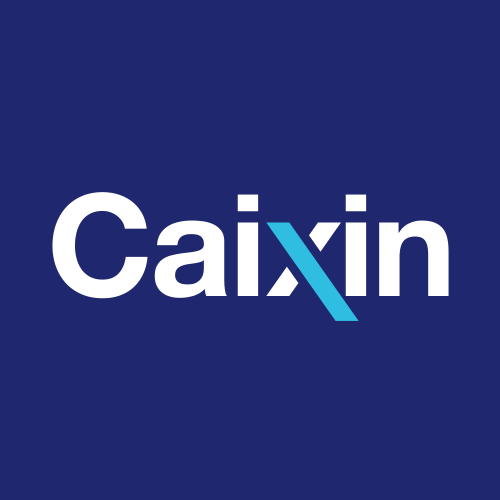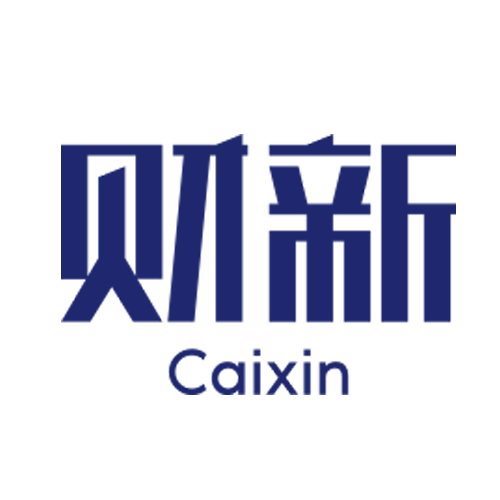Listen to the full version


文|财新周刊 吴雨俭
By Caixin Weekly’s Wu Yujian
急需补充资本的人身险行业,或将再迎变局。这一次的焦点,仍然集中在保险业讳莫如深、颇为敏感的财务再保险业务上。
The life insurance industry, which is in urgent need of capital infusion, may face another upheaval. This time, the focus remains on the controversial and highly sensitive aspect of the insurance sector—financial reinsurance.
所谓“财务再保险”(业内简称“财务再”),多发生在保险公司出现偿付能力告急的情况下,其本质是直保公司从再保险公司拆借一笔临时的资本金。
The so-called "financial reinsurance," commonly referred to as "financial re" within the industry, often occurs when an insurance company faces a solvency crisis. Essentially, it involves the primary insurance company borrowing a temporary sum of capital from a reinsurance company.
自2021年起,保险行业逐步承压,叠加“偿二代”二期规则的实施,越来越多险企的偿付能力开始吃紧,目前已有将近一半的寿险公司通过财务再保险维持偿付能力。尤其是在保险公司增资和发债不畅的当下,财务再保险已成为中小险企重要的外源性资本补充方式(参见本刊2023年第17期《财务再保险需求增长背后》)。
Since 2021, the insurance industry has been gradually coming under pressure, compounded by the implementation of the "China Risk-Oriented Solvency System" (C-ROSS) Phase II rules. As a result, an increasing number of insurance companies are experiencing tightened solvency margins. Currently, nearly half of the life insurance companies are maintaining their solvency through financial reinsurance. Particularly given the current difficulties in capital increases and debt issuance for insurers, financial reinsurance has become a crucial external capital replenishment method for small and medium-sized insurance companies (see our publication 2023, Issue 17, "The Growing Demand Behind Financial Reinsurance").

- DIGEST HUB
- The life insurance industry is experiencing financial pressure and relies heavily on financial reinsurance to maintain solvency, especially small and medium-sized companies.
- Financial reinsurance is controversial and can artificially inflate an insurer's solvency, leading to increased regulatory scrutiny and potential policy tightening.
- To address capital shortages, authorities suggest expanding capital supplementation methods, including shareholder capital increases, bond issuance, and learning from banking sector practices.
The life insurance industry is currently experiencing pressures and challenges related to "financial reinsurance," a method that allows insurance companies to temporarily borrow capital from reinsurance companies to improve their solvency margins. This practice has become increasingly critical as many insurance companies are now facing solvency crises due to regulatory changes like the implementation of the "China Risk-Oriented Solvency System" (C-ROSS) Phase II rules [para. 1][para. 3].
Financial reinsurance has always been controversial due to its potential to artificially inflate the solvency of insurance companies and obscure financial risks. This was highlighted when the National Audit Office issued an opinion on China Reinsurance (China Re), indicating that financial reinsurance could misrepresent an insurer's solvency capability. This opinion has sparked concerns within the life insurance sector, which is already struggling with capital replenishment challenges [para. 4][para. 5].
Industry experts liken financial reinsurance to medical anesthesia - helpful in the short term but potentially harmful if overused. Abuse stems from insurers' overspending tendencies and reinsurers' profit drives, combined with inconsistent regulation over the years [para. 6][para. 7][para. 8].
Moreover, the impact of past financial scandals has added to the skepticism surrounding financial reinsurance. Notably, companies like HIH Insurance, AXA, and AIG have faced severe consequences due to the misuse of financial reinsurance. This has led to regulatory tightening in various countries, including China, where financial reinsurance has seen a fluctuation in acceptance and regulation [para. 9][para. 10][para. 11][para. 12].
The life insurance industry, burdened by financial pressures, relies heavily on financial reinsurance, especially small and medium-sized companies struggling to secure shareholder capital or issue bonds [para. 13]. However, the National Audit Office’s findings may lead to tighter regulations.
The Beijing Bureau of the State Administration of Financial Supervision has already taken steps to regulate financial reinsurance by requiring thorough documentation from companies that use it to improve solvency. Similar measures are anticipated in other regions like Shanghai [para. 14][para. 15][para. 16].
While some predict a substantive tightening of financial reinsurance, others believe that regulatory efforts will focus on eliminating fake financial reinsurance while allowing legitimate transactions [para. 17]. The industry's consensus is that reinsurance contracts need to maintain a significant risk transfer to qualify as legitimate reinsurance [para. 18][para. 19].
Solvency standards under C-ROSS Phase II encourage genuine risk transfer through reinsurance, emphasizing transparency and detailed reporting. However, many insurers still misuse financial reinsurance to embellish their financial statements, presenting a challenge for auditors and regulators [para. 20][para. 21][para. 22].
Notable cases of insurers like Huaxia Life and Junko Life illustrate how financial reinsurance can manipulate solvency perceptions and delay genuine capital replenishment efforts. Thus, experts emphasize the regulated and responsible use of financial reinsurance, rather than an outright ban [para. 23][para. 24][para. 25][para. 26][para. 27].
Li Yunze, the party secretary and director of the State Financial Regulatory Administration, stressed the need for reforms and improvements within the insurance industry to address capital insufficiencies. Potential reforms include diversifying capital sources, issuing perpetual bonds, revising shareholder qualifications, and modernizing regulatory practices [para. 28][para. 29][para. 30]. Theoretically, permitting shareholders like commercial banks to own more than a third of an insurer's equity could stabilize companies by alleviating solvency pressures [para. 31][para. 32].
In summary, while financial reinsurance remains a critical tool for short-term solvency support, the industry and regulators must focus on sustainable, long-term capital solutions. Continued reforms and broader capital channels are essential for the stability and development of the life insurance industry.
- China Reinsurance
中国再保险 - China Reinsurance (01508.HK), also known as China Re, is currently at the center of scrutiny after an audit by the National Audit Office. The audit flagged issues with financial reinsurance, highlighting its role in artificially boosting insurers' solvency and masking financial risks. China Re, along with Hannover Re, is a major provider of financial reinsurance in the market.
- Hannover Re
汉诺威再保险 - Hannover Re (汉诺威再保险) is a foreign company mentioned in the article as one of the main providers of financial reinsurance in China, alongside China Re (中再). The article notes that its involvement in financial reinsurance has been significant, contributing to the concealment of financial risks in certain Chinese insurance companies.
- Huaxia Life Insurance
华夏人寿 - Huaxia Life Insurance faced capital challenges starting in 2017, relying increasingly on financial reinsurance to maintain solvency after the disappearance of other capital sources following its major shareholder's legal troubles. Regulatory bodies kept it operational to avoid liquidity risks until its 2020 takeover. Financial reinsurance inflated its reported solvency, masking severe inadequacies.
- Kunlun Health Insurance
君康人寿 - The article mentions Kunlun Health Insurance (君康人寿) as one of the companies that faced issues by heavily utilizing financial reinsurance to improve solvency. In Q1 2020, its actual solvency rate was much lower than reported, highlighting misuse of financial reinsurance to cover financial instability. This misuse contributed to regulatory scrutiny and industry-wide concerns.
- Xintai Life Insurance
信泰人寿 - Starting from 2017, Xintai Life Insurance has relied heavily on financial reinsurance to improve its balance sheet and solvency. This practice has brought up issues again, prompting the introduction of the "Solvency II Phase II" rules in 2021 to enhance regulatory standards and minimize "accounting games."
- Ping An Insurance
中国平安 - In 2008, Ping An Insurance leveraged financial reinsurance to offset a significant loss from its investment in Fortis Group, resulting in a tax-free profit boost of over 4.8 billion RMB. This move helped Ping An report a net profit above 600 million RMB despite a large provision for impairment. This was one of the earliest notable uses of financial reinsurance in China.
- AXA Insurance
法国安盛保险 - In 2005, AXA Insurance faced investigation over allegations of misusing financial reinsurance contracts to embellish financial statements. This was part of a broader scrutiny involving several prominent insurance companies and highlighted issues related to the misuse of innovative financial tools in the insurance industry.
- General Reinsurance
通用再保险公司 - General Reinsurance, a subsidiary of Berkshire Hathaway, was involved in a financial scandal in 2005. It faced allegations of misusing financial reinsurance contracts to embellish financial statements. During the 2008 financial crisis, the company was again implicated in misusing financial reinsurance. Subsequently, a Vice President of AIG and four General Reinsurance executives were convicted for conspiracy and securities fraud charges.
- Aixin Life Insurance
爱心人寿 - Aixin Life Insurance is mentioned in the context of receiving additional capital support. In the first quarter of 2024, Aixin Life Insurance was among the companies that received capital infusions, helping to bolster its financial position. The company secured an increase in funds within a range from 2 billion to 27 billion, aimed at enhancing its overall financial resilience.
- Huatai Life Insurance
华泰人寿 - Huatai Life Insurance is mentioned as one of the companies that received capital injections for solvency in early 2024. It is part of a group that obtained capital increments ranging from 2 billion to 27 billion yuan, totaling over 75 billion yuan. Additionally, Huatai Life is noted to be one of the 11 Beijing-based firms engaged in financial reinsurance.
- Hengbang Life Insurance
恒邦人寿 - Hengbang Life Insurance is mentioned as one of the companies that received capital injections in Q1 2024, receiving an investment of around 2 to 27 billion yuan as part of a total 75 billion yuan raised by multiple life insurers to improve solvency capacity.
- Sunshine Life Insurance
阳光人寿 - Sunshine Life Insurance is mentioned as one of the companies that received capital supplementation recently. In the first quarter of 2024, it was among the companies that secured combined capital infusions exceeding 75 billion RMB, totaling amounts ranging from 2 billion to 27 billion RMB individually.
- Citic Prudential Life
中信保诚人寿 - According to the article, Citic Prudential Life is one of the companies that received capital infusion in the first quarter of 2024. This infusion aimed to enhance their solvency capabilities, which aligns with the overall industry trend of strengthening financial stability through capital injections.
- Hengqin Life Insurance
横琴人寿 - Hengqin Life Insurance, headquartered in Zhuhai, received approximately 753 million yuan in additional capital from its state-owned shareholder, Zhuhai Huachuang Investment Management Co., increasing its stake to 49%, surpassing the previous one-third ownership limit. Despite facing challenges and fluctuating business conditions in recent years, the company continues to seek solutions for capital adequacy.
- Heng An Standard Life
恒安标准养老 - Heng An Standard Life is highlighted as one of the companies that benefited from capital increases, obtaining over 75 billion RMB in additional funds in Q1 2024 alongside other firms. This influx of capital was needed to meet regulatory solvency requirements amid pressures in the Chinese life insurance sector.
- Since 2021:
- The insurance industry has been coming under pressure due to the implementation of the China Risk-Oriented Solvency System (C-ROSS) Phase II rules.
- In 2023:
- Publication issue 17 of 'The Growing Demand Behind Financial Reinsurance' highlighted the crucial role of financial reinsurance for small and medium-sized insurance companies.
- In the second half of 2023:
- Financial regulatory authorities conducted a survey on financial reinsurance activities undertaken by some life insurance companies.
- Before 2024:
- Financial regulatory authorities surveyed the financial reinsurance circumstances of 40 insurance companies.
- GALLERY
- PODCAST
- MOST POPULAR





 Sign in with Google
Sign in with Google
 Sign in with Facebook
Sign in with Facebook
 Sign in with 财新
Sign in with 财新